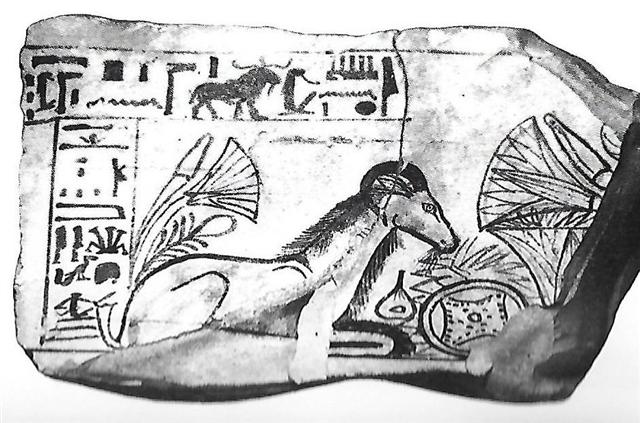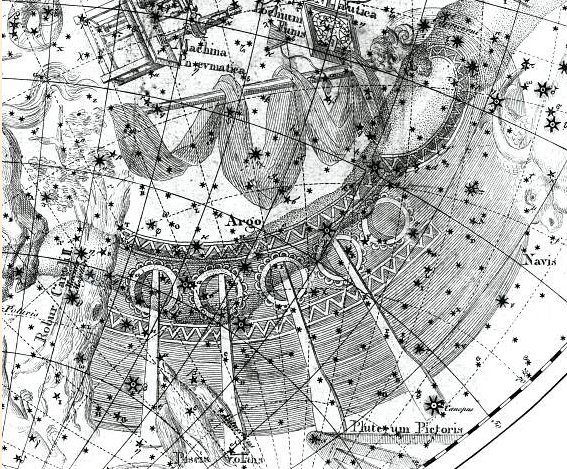There is a complex configuration below the 'ghost of a mast':
Possibly it had originated in ancient Egypt because directly beneath the head of the modern type of Ram (Aries) was a single 'eye' followed by what could be a round frame with an outstretched fur. This fleece has 24 + 6 = 30 dots:
It would be interesting to know where precisely according to the Roman little as coin Argo Navis was cut off from view. Possibly the cross-like box at right was a precursor to the modern constellation Pyxis Nautica: ... recent astronomers have subdivided the figure for convenience in reference, and now know its three divisions as Carina, the Keel, with 268 stars, Puppis, the Stern, with 313, and Vela, the Sail, with 248 ... La Caille, moreover, formed from stars in the early subordinate division Malus, the Mast, Pyxis Nautica, the Nautical Box or Mariner's Compass ... Hevelius has no sign of such a Nautical Box, but it was otherwise depicted a bit up in the mast:
We know Atea changed her sex to become a male and then he created Ru who divided the earth into the 4 cardinal directions. The reason could have been that her 2nd husband no longer was potent. His mast (tree) was broken. ... Atea then became the wife of Rua-tupua-nui, Source of Great Growth, and they became the parents of all the celestial beings, first the shooting stars, then the Moon and the Sun, next the comets, then the multitude of stars and constellations, and finally the bright and dark nebulae. When this tremendous task had been accomplished Atea took a third husband, Fa'a-hotu, Make Fruitful. Then occurred a curious event. Whether Atea had wearied of bringing forth offspring we are not told, but certain it is that Atea and her husband Fa'a-hotu exchanged sexes. Then the [male] eyes of Atea glanced down at those of his wife Hotu and they begat Ru. It was this Ru who explored the whole earth and divided it into north, south, east, and west ...
We need to pinpoint the stars in Pyxis Nautica: "Pyxis was formed by La Caille from stars in the Mast of Argo, and so associated with the Ship, although there of course, it is an anachronism. Baily reannexed it in Argo, since four of its members had been placed by Ptolemy where La Caille found them, so that for a time it fell into disuse; but Gould inserted iwt in his Uranometria Argentina of 1879, with sixty-six stars from 3.8 to 7th magnitude." (Allen) I have so far not mapped the stars in the modern Pyxis constellation. But we obviously need them. |



